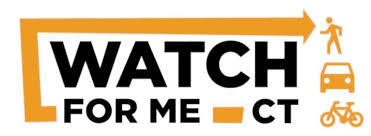Bicycle Safety
What most people don't know about bicycling in Connecticut is that bicyclists (along with electric bicycles and electric foot scooters) are considered vehicles when they are in the roadway. The law states that bicyclists driving in the roadway shall be granted all the rights, and shall be subject to all the duties applicable to any driver of a vehicle. What this means is that if you are driving your bicycle on any road, you must obey all the laws that a car must obey. Bicyclists must ride on the right side of the road, with traffic, not against it. They must signal their turns, obey all traffic signs / signals, and yes, obey the speed limit. One of the reasons for this law is that it gives bicyclists the right to drive on the roadway and defines who has the right of way at intersections. Bicyclists must drive as far to the right as practicable, and no more than two abreast. More information can be found by by reading CT General Statutes §14-286 through §14-289k.
The law also defines rights and duties when riding on a sidewalk. A bicyclist is considered a pedestrian when riding on a sidewalk, however, the bicyclist must give the right of way to a person walking on the sidewalk.
It is a state law (punishable by a fine) that bicyclists must be given at least three feet of space when being passed by motor vehicles on the roadway ( §14-232).
Bicycle Helmets
Connecticut's helmet law requires children under the age of sixteen to wear bicycle helmets. According to CONNECTICUT SAFE KIDS, Bicycles are associated with more childhood injuries than any other consumer product except the automobile. Head injury is the leading cause of death in bicycle crashes.
- Riding without a bicycle helmet increases the risk of sustaining a head injury in the event of a crash. Non-helmeted riders are 14 times more likely to be involved in a fatal crash than those wearing a helmet.
- Wear a bicycle helmet correctly. It should be comfortable and fit snugly, but not too tight. It should not slide forward and back or side to side. Straps should always be buckled.
- All helmets should meet or exceed the safety standards developed by the American National Standards Institute (ANSI), the Snell Memorial Foundation and/or the American Society for Testing and Materials (ASTM).
NHTSA recommends these tips of road riding:
Be focused and alert to the road and all traffic around you; anticipate what others may do, before they do it. This is defensive driving—the quicker you notice a potential conflict, the quicker you can act to avoid a potential crash:
- Drive with the flow, in the same direction as traffic.
- Obey street signs, signals, and road markings, just like a car.
- Assume the other person doesn’t see you; look ahead for hazards or situations to avoid that may cause you to fall, like toys, pebbles, potholes, grates, train tracks.
- No texting, listening to music or using anything that distracts you by taking your eyes and ears or your mind off the road and traffic.
 
|